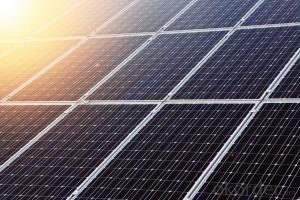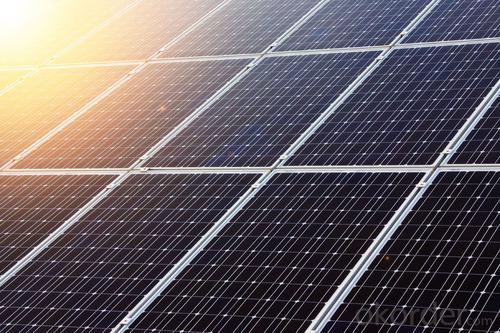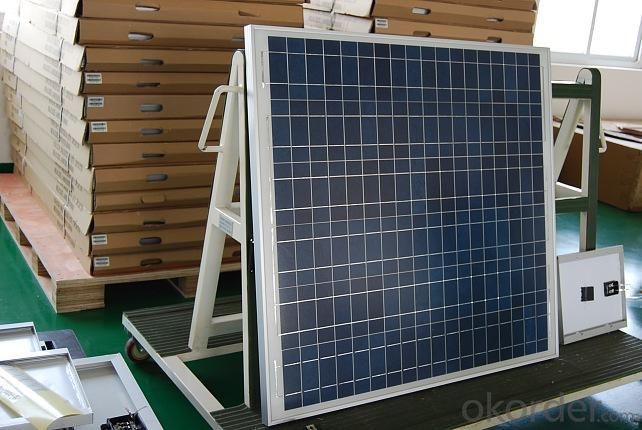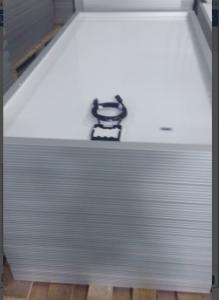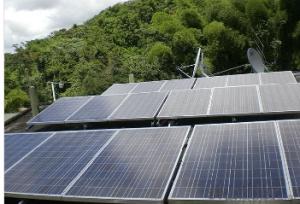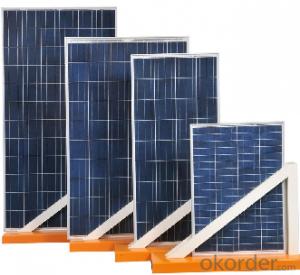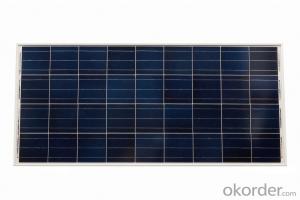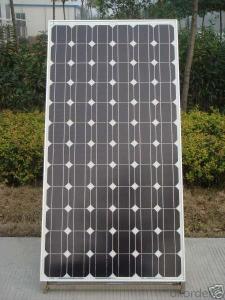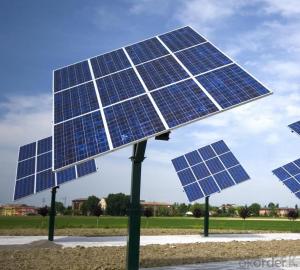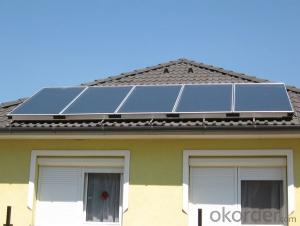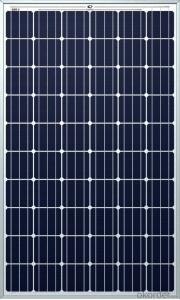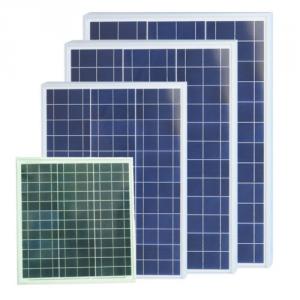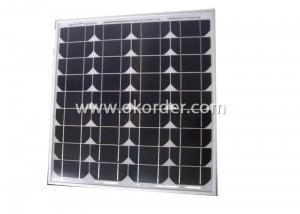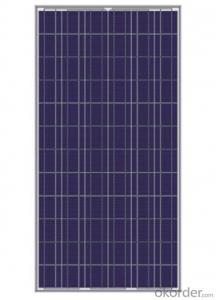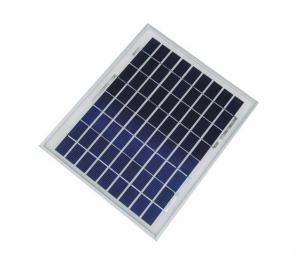Lumina Solar Panels 320w Poly Solar Module with High Efficiency
- Loading Port:
- Tianjin
- Payment Terms:
- TT OR LC
- Min Order Qty:
- 1 watt
- Supply Capability:
- 100000 watt/month
OKorder Service Pledge
OKorder Financial Service
You Might Also Like
Specification
Product Description:
1.Structure of Solar Module Description
CNBM Solar's photovoltaic module is designed for designed for large electrical power requirement. It is the optimal choice for both on-grid and off-grid power systems. CNBM Solar offers high performance of power per square foot of solar array.
2.Main Features of the Solar Module
Solar Cell: High efficency crystalline solar cell. Even if under the weak light, the solar module can produce maximum power output.
Tempered glass: Anti-reflecting coating and high transmission rate glass increase the power output and mechanical strength of solar module.
EVA and TPT: Using high quality EVA and TPT to prevent destroying and water.
Strong aluminum frames to strengthen the load hold and to stand against high wind.
Junction box: Multi function junction box with water proof.
Long lifetime: ≥25 years; Less power decrease.
Good performance of preventing from atrocious weather such as wind and hails.
Resisting moisture and etching effectively, not effected by geology.
The certificate issued by international authority: UL, TUV, IEC, VDE, CE.
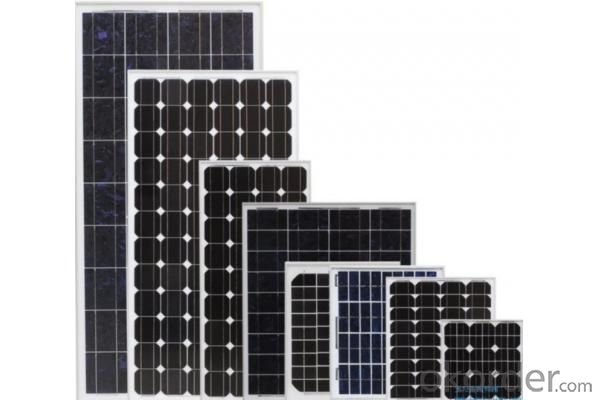
Solar panel working process
In addition to being the ultimate source of all life on earth, the sun is an infinitely renewable, completely pollution-free source of electricity. Instead of burning fossil fuels dug up from the ground in a big power plant – a very 19th century, industrial age approach, when you think about it – solar panels convert sunlight directly into electricity, with no harmful emissions.
The basic unit of a solar panel is a solar cell, which usually consists of one or two layers of silicon-based semiconductor wafers. When struck by the photons in sunlight, the solar cell generates an electrical charge due to the "photovoltaic effect" – which is a pretty good name, since it produces voltage from photons. The flow of these electrons moves in a steady electrical current from one side of the cell to the other.
Dozens of these PV cells are packaged together into solar modules, which in turn are packaged into solar panels that are mounted on a rooftop and arranged to maximize their hours of exposure to direct sunlight. Because the electricity generated by all those solar cells is direct current (DC), it is then sent to an inverter that transforms the power into the same alternating current (AC) used by the appliances in your home and the local utility electricity distribution grid. Increasingly, these inverters are getting "smart," providing data monitoring for solar installation performance and other grid integration services.
- Q: Can solar panels be used in areas with high levels of dust storms?
- Yes, solar panels can still be used in areas with high levels of dust storms. However, it is important to ensure regular maintenance and cleaning of the panels to prevent dust accumulation, which can reduce their efficiency.
- Q: What things can a solar panel power?
- With the right equipment anything that requires electricity. I have been living on solar power for 6 years now.
- Q: I'm part of the Sustainability group at school, the school principal is a d**k and doesn't care about the environment, he only cares about money.Me and the group will be talking in front of him and the school council (the people in-charge of the school's money) To convince them to put solar panels on the school roofs.I know that it definitely will help the school save on electricity bills, but it WILL cost a lot of money to put them in.In the end we just wanna reduce carbon emissions!HELP :)
- Show live examples such as those in Northern CA where the schools working with private industry funded a complete solar installation for a school district. Yes it can be done!
- Q: I've been thinking and I'd like to have solar panels installed on my roof at some point to help reduce our electricity consumption- but I live in IL and in the winter it frequently snows. Is there such a thing as heated solar panels so they don't get coated w/ice or snow? Are solar panels even a feasible option in IL? Thank you, Anna
- With state incentives that rank behind only a few states (such as the ones typically associated with solar like Florida and California) somebody definitely thinks solar is right for Illinois. (source is first site below) As for the ice and snow the typical strategy is to have a tilt that allows for only limited accumulation and still has good orientation to the sun. This is frequently talked about in articles in the magazines Homepower and Solar today. Homepower has a site online and some items are free (2nd site) Good Luck
- Q: Can solar panels be used in areas with high levels of salinity or brackish water?
- Yes, solar panels can be used in areas with high levels of salinity or brackish water. While exposure to saltwater can potentially cause corrosion and reduce the efficiency of solar panels over time, there are various measures that can be taken to mitigate these effects. These include selecting corrosion-resistant materials, applying protective coatings, and regular maintenance. Additionally, advancements in solar panel technology have led to the development of more robust and durable panels that can withstand harsh environments, including areas with high salinity or brackish water.
- Q: How do solar panels impact the local job market?
- Solar panels have a positive impact on the local job market by creating new employment opportunities. The installation, maintenance, and manufacturing of solar panels require a skilled workforce, leading to job growth in these sectors. Additionally, the renewable energy industry stimulates economic development and attracts investments, resulting in job creation across various industries.
- Q: Can solar panels be used to power a skyscraper?
- Yes, solar panels can be used to power a skyscraper. Advanced solar technologies and efficient panel setups can generate significant amounts of electricity, making it feasible to meet some or all of a skyscraper's power needs. However, considering the high energy demands of skyscrapers, a combination of solar power with other renewable sources or grid connection is often employed to ensure a reliable and consistent power supply.
- Q: Are solar panels affected by shade?
- Yes, solar panels are affected by shade. Shade can significantly reduce the efficiency and output of solar panels as shading obstructs sunlight, which is necessary for generating electricity. It is important to install solar panels in areas with minimal shade to maximize their performance and efficiency.
- Q: Can solar panels be installed on a tennis court or sports complex?
- Yes, solar panels can be installed on a tennis court or sports complex. The large open spaces and flat surfaces of these facilities provide ideal conditions for solar panel installation. This can help generate clean energy, reduce electricity costs, and contribute to a more sustainable environment.
- Q: How efficient are the solar panels....?
- DS's solar panels convert 22% of their available energy into electrical power. This may not sound very good, but it is much better than most solar panels. Most solar panels on people's houses, for example, are fairly inefficient. Less than 4% of the energy that reaches them will be converted to electricity. DS's panels are so efficient, in fact, that unless the ion propulsion drive is running, DS is producing far more power than it needs.
Send your message to us
Lumina Solar Panels 320w Poly Solar Module with High Efficiency
- Loading Port:
- Tianjin
- Payment Terms:
- TT OR LC
- Min Order Qty:
- 1 watt
- Supply Capability:
- 100000 watt/month
OKorder Service Pledge
OKorder Financial Service
Similar products
Hot products
Hot Searches
Related keywords
